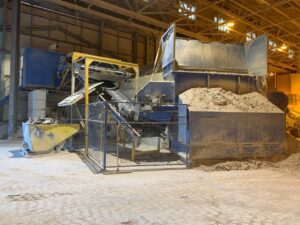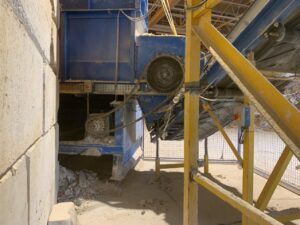Man “lucky to be alive” after incident at luxury yacht maker in Plymouth
A premium yacht makers has been hit with a £600,000 fine after one of its workers suffered life changing injuries at its shipyard in Plymouth.
Mark Gillen’s wife Sarah said she is lucky to still have her husband around after he sustained a catalogue of injuries, including 12 broken ribs and a severed right arm, when a staging platform weighing approximately one tonne, toppled over and fell on top of him.
The 54-year-old, who had worked for the company for 26 years, also suffered bleeds on the brain and remained in hospital for several months.

A Health and Safety Executive (HSE) investigation found the platform fell due to one of the front wheels hitting a divot in a concrete surface. Mark had been part of a team working on a 72-foot vessel at the company’s Southyard site when the incident happened on 9 November 2021.
Sarah Gillen said: “Our worlds were turned upside down the day Mark had the catastrophic crush accident, leaving him with life changing injuries. He simply went to work that morning, and while he was eventually able to come home, our lives will never be the same.
“We are incredibly lucky to still have him with us but there is no denying that the road to recovery has been, and continues to be, extremely difficult and challenging.
“We are very grateful to the team at the HSE for all the work that has gone into holding Princess Yachts to account. However, the sad reality is that no fine, no matter how significant, will ever truly reflect the pain and ongoing suffering that Mark and our family has been through.”
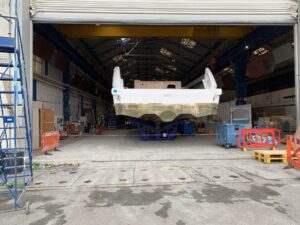
HSE enforcement lawyer Andy Siddall told Plymouth Magistrates’ Court how on the day, finished mouldings were being moved from the firm’s Southyard site to their one on Newport Street for fit-out. Staging platforms were used extensively by the company to form a safe and stable work at height platform that surrounds a moulding and later a boat whilst it is the manufacturing stage. As Mark and two of his colleagues began to push the platform, one of the front wheels hit a divot in the concrete surface, causing it to topple and fall on top of him. Due to the seriousness of his injuries, Mark was then airlifted to hospital.
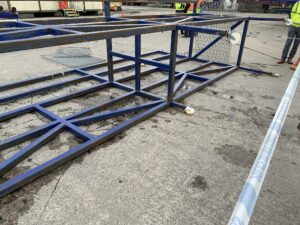
Sarah went on to say that before the incident Mark had been a fit, healthy strong and determined man.
“He had enjoyed weight training, boxing gym, cycling and playing golf with friends and a very active social life” she said.
“Now though, he is in constant chronic nerve pain which affects his ability to participate in the things he once loved, which in turn has a huge detrimental impact on his health and wellbeing.
“It is our hope that today’s outcome will act as a wakeup call to Princess Yachts and other companies about the devastating and serious consequences of health and safety failings in the workplace, and that lessons are learnt that could prevent others being injured, or worse, in similar circumstances.”
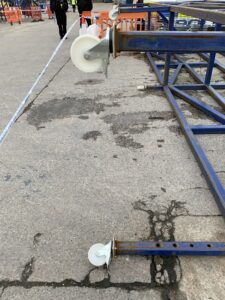
The HSE investigation found that there was a failure to assess the risks associated with moving staging platforms manually through the external yard. Had this been done, it would have identified the uneven ground as a hazard that required controlling. The risks could have been further eliminated by prohibiting the manual moving of the platforms and requiring any external movement to be carried out by forklift trucks.
Princess Yacht Limited of Newport Street Plymouth pleaded guilty to breaching the Health and Safety At Work Act 1974 2 (1). The company was fined £600,000 and ordered to pay costs of £9,146.
HSE inspector Paul Mannell echoed the comments made by Mark’s wife Sarah: “Mark Gillen is lucky to be alive.
“The company should have had measures in place to ensure that mobile staging was never pushed through the yard by hand.
“As the measures taken post-accident clearly show, it would have been reasonably practicable to have had them in place when Mr Gillen was injured.
“They were implemented immediately after the accident at no cost to the company.
“The failure to have in place a safe system of work resulted in a life changing injury to a loyal employee who had worked for the company for 26 years.”
Notes to Editors:
- The Health and Safety Executive (HSE) is Britain’s national regulator for workplace health and safety. We prevent work-related death, injury and ill health through regulatory actions that range from influencing behaviours across whole industry sectors through to targeted interventions on individual businesses. These activities are supported by globally recognised scientific expertise.
- More information about the legislation referred to in this case is available.
- Further details on the latest HSE news releases is available.

